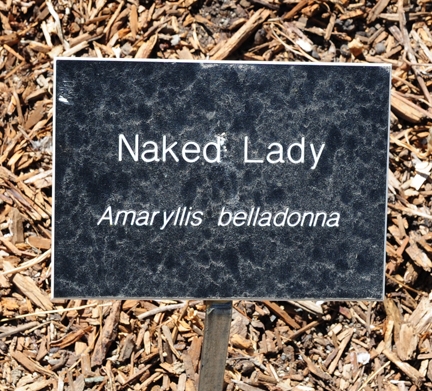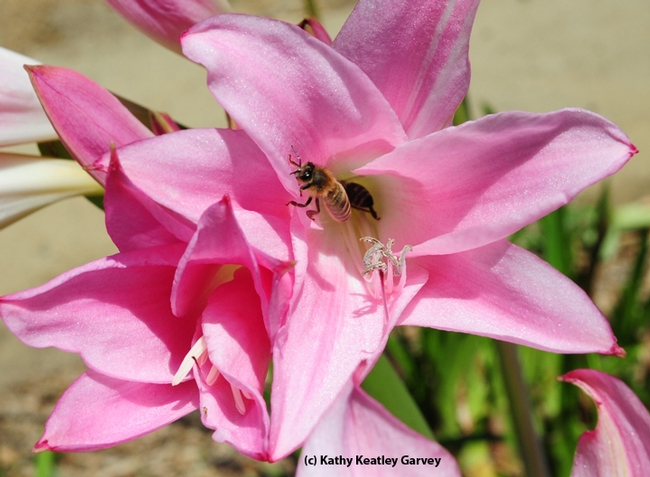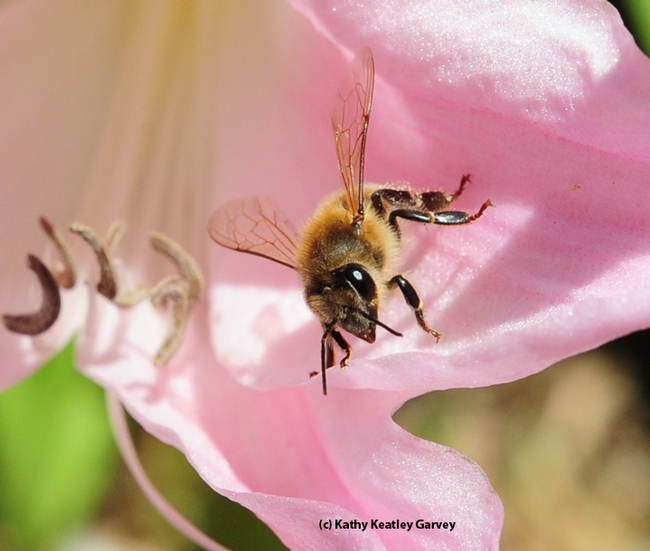
That would be the Luther Burbank Gold Ridge Experiment Farm in Sebastopol.
"Luther Burbank bought his 15-acre farm on Gold Ridge in 1885 in Sebastopol," says the Western Sonoma Historical Society on its website. "During his career he introduced over 800 varieties of fruits, flowers, vegetables, and grains. He developed many of California's plums and prunes, the ancestor of the Idaho Potato, the Shasta Daisy, and novelties such as Plumcots, Thornless Blackberry, and Spineless Cactus. His home in Santa Rosa was primarily a showplace, but he developed and grew thousands of new hybrids, cross breeds and selections at his Experiment Farm in Sebastopol."
Burbank (1849-1926), noted American botanist, horticulturist and pioneer in agricultural science and always the experimenter, was inducted into the Inventor's Hall of Fame in 1986.
So, what's the flurry of pink at the Gold Ridge Farm?
Naked ladies. The spectacular bulbous plant, Amaryllis belladonna.
The leafless plant (at least in summer, hence the name) looks like the Pepto Bismol of the plant world. It's native to the Cape Province, South Africa. The plant is named after the Greek beauty, Amaryllis. And "bella donna" means beautiful lady in Italian. "Botanically belladonna also means poisonous," according to CalCallas.com.
A recent tour of the Gold Ridge Experiment Farm found the amaryllis springing to life, as honey bees buzzed in and out. ("Amaryllis" is the name you call it when little children are around!)
The Gold Ridge Farm, located at 7781 Bodega Ave., Sebastopol, is a quiet place, a place for nature walks, a place of extraordinary beauty, and a place to contemplate what life must have been like in the 1800s and early 1900s. His cottage, renovated after the 1906 'quake, is listed in the National Register of Historic Places.
It's easy to see what influenced and inspired Luther Burbank, not just here on the Gold Ridge Experiment Farm, but at his Luther Burbank Home and Gardens in Santa Rosa.
Attached Images:

